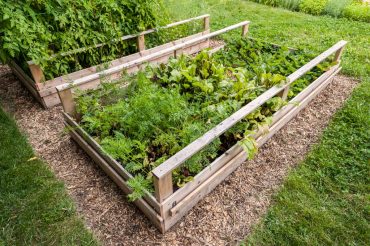 Spring is a great time of the year to spruce up your gardening habits. From cutting down on the trash generated by gardening, to gardening in a way that reduces the amount of household items you need to buy, there are ideas for every shade of green thumb.
Spring is a great time of the year to spruce up your gardening habits. From cutting down on the trash generated by gardening, to gardening in a way that reduces the amount of household items you need to buy, there are ideas for every shade of green thumb.
Here are 10 tip to help you find new ways to reduce waste as you garden from Recyclebank, the incentives and behavior-change platform focused on waste.
Make Black Gold
Supercharge your soil and create less waste at the same time — you might be surprised by what can go from inside your home straight into the ground.
1. Start a compost pile in your backyard. All of your fruit and vegetable scraps (no dairy or meat) can be used for compost. Not only does this stop this food waste from going to a landfill, it also can enrich your soil! Win-win.
2. Add used coffee grounds to your soil. Used coffee grounds headed for the trash can definitely find a better home in your garden (they can be great for the soil!), just be sure to spread them out carefully to prevent mold from growing.
3. Save your newspapers for mulch. We know most news is digital nowadays, but some of us still like to keep it old school with a hard copy. And though newspaper is recyclable, gardening season gives us another good to the trash: Using newspapers as mulch or a weed deterrent by laying it flat around plants.
Plant Smart
The plants you choose for your garden or for indoor décor can help you avoid paper waste and even replace some typical household products.
4. Skip the seedlings. Instead, purchase seeds directly from a nursery or even trade seeds with friends to avoid all of the unnecessary packaging that comes with seedlings.
5. Go seedless. Seeds can come in unnecessary packs and packaging compared to this alternative: Ask any friends with cool plants if you could take a small cutting from their plant to start your own. But note that this could be trickier than it sounds; be sure to research just how to do this before trying.
6. Choose plants that serve multiple purposes. Pick plants that can actually eliminate items from your shopping list. (Save money and reduce waste? Yes, please!) Instead of buying a bottle of pesticide solution, you could plant basil in order to repel flies and mosquitoes; instead of buying a bottle of burn ointment, you could keep an aloe plant in order to soothe minor burns.
Contain Creatively
Organizing and containing your plants and gardens is an art form all its own, ripe with opportunities to reduce, reuse and recycle.
7. Upcycle or make your own reusable plant markers. Though store-bought ones can be adorable and very tempting, being able to upcycle containers, plastic utensils or even old clothespins into plant markers keeps those items out of the garbage, allows you to personalize and get creative in your garden, and gives you a reason to save them and use them again for next season.
8. Make a raised bed with leftover building materials. A raised bed allows you to have full control over your soil and finally gives you a way to use all of that wood, plastic lumber or brick leftovers sitting in your shed from your last home project.
Don’t have any of these lying around? Ask a nearby construction site for any extras that normally would be dumped, and not only will you score some awesome materials, but you’ll also save these materials from ending up landfills.
9. Reuse or recycle old pots. Those plastic pots that larger plants come with are usually recyclable, but finding a new use for them around your house (perhaps for starting your own seedlings) or bringing them back to the store where you bought them (to be used for new plants) are two even better ways to give those pots a second life.
10. Make planters out of anything headed for the trash. Alright, here’s your chance to get creative. Thanks to Pinterest, all you need is a little patience and craftiness to make almost anything into a planter. From outgrown shoes to tires, and from light bulbs to an old bathtub, the options are endless.























